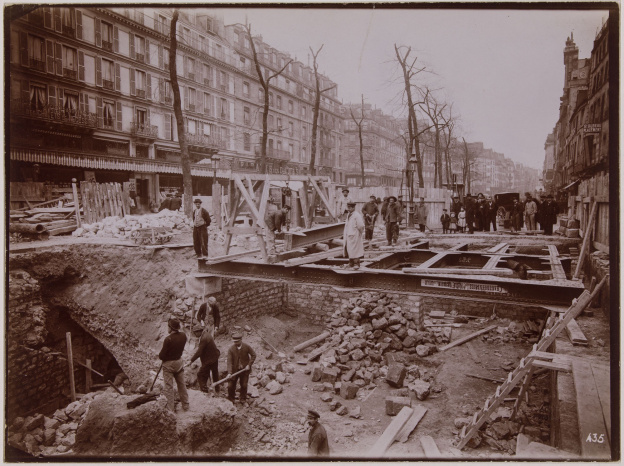Since its birth on July 19, 1900, the Paris metro ticket has been much more than just a piece of paper. Through its changing fare structure, it tells the economic and social story of Paris. In his book Petite histoire du ticket de métro parisien, Grégoire Thonnat invites us to explore this fascinating chronology.

The inauguration of the first metro line marked the start of a new era. The first fares were symbolic: 15 centimes for second class and 20 centimes for first class. The North-South network, launched in 1910 with today's line 12, adopted a similar fare system. However, in 1930, due to lack of profitability, it was absorbed by the CMP.
Fares remained stable for 19 years, until the first increase in 1919, when the second-class ticket was raised to 20 centimes. This modest increase was the beginning of a series of fare adjustments that reflected the economic and inflationary realities of the time. In 1925, the introduction of the fare alphabet facilitated the management of these frequent changes.

The inter-war period saw a significant increase in fares. The second-class ticket reached 1 franc at the1937 Universal Exhibition. The Occupation also had an impact on fares, with restrictive measures and the reduction of ticket books.
After the Second World War, the CMP experienced a record influx of passengers, leading to changes in the fare structure. RATP, created in 1948, inherited this rapidly expanding network. First class was abolished in 1946 to save space, but reinstated two years later.
The evolution of fares in the 1950s and 1960s reflected a city in constant evolution. The introduction of the Carte Orange in 1975 was a real revolution, offering unlimited access to all means of transport for a fixed fare.
A charming aspect of Paris metro history was the role of the punchman. Tickets were sold at each station, then punched at the platform entrance by an agent, often a woman during the First World War. This system lasted for 75 years and inspired one of France's most beautiful songs,"Le Poinçonneur des Lilas". With the arrival of the magnetic stripe ticket in 1968 and automatic ticket machines in 1973, the job of the poinçonneur gradually disappeared.
The transition to the digital age began with the Pass Navigo in 2001, and in 2003 the Ticket T violine unified the transport system. The arrival of the Navigo Easy in 2019 sounded the death knell for the metro ticket, a symbolic end for an object that has spanned over a century of Parisian history.
Much more than a simple ticket, the Parisian metro ticket has witnessed economic and social change in the capital. Its disappearance marks the end of an era, but also the city's adaptation to a new technological and environmental reality.
Prices
Free
Recommended age
For all



















